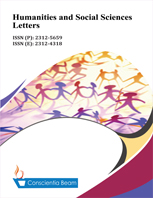Women’s empowerment index for handloom weavers in assam, India
DOI:
https://doi.org/10.18488/73.v11i2.3347Abstract
The main purpose of this study is to construct a women’s empowerment index for handloom weavers by adopting the tools developed by the Oxford Poverty & Human Development Initiative (OPHI). Within Assam, India, 1000 sample respondents were selected for the study from five leading handloom production districts. For the study, individual-level data were collected by interviewing handloom weavers comprising seven domains and 25 indicators. A regression analysis was used in the study, and the results revealed that out of the five districts in Assam, the empowerment index of handloom weavers is highest for Kamrup (rural) (0.72), followed by Barpeta (0.64), Kokrajhar (0.61), Nagaon (0.58), and Chirang district (0.44). Overall, the women’s empowerment index for handloom weavers is less than the global standard empowerment weighted average of 0.80. It was also found that empowerment is linked to wages, education, availability of electricity, media exposure, and other household characteristics. Therefore, policies should set out a minimum wage structure for weavers that is fixed by the government and implemented properly as well as initiatives regarding other factors that encourage empowerment.

